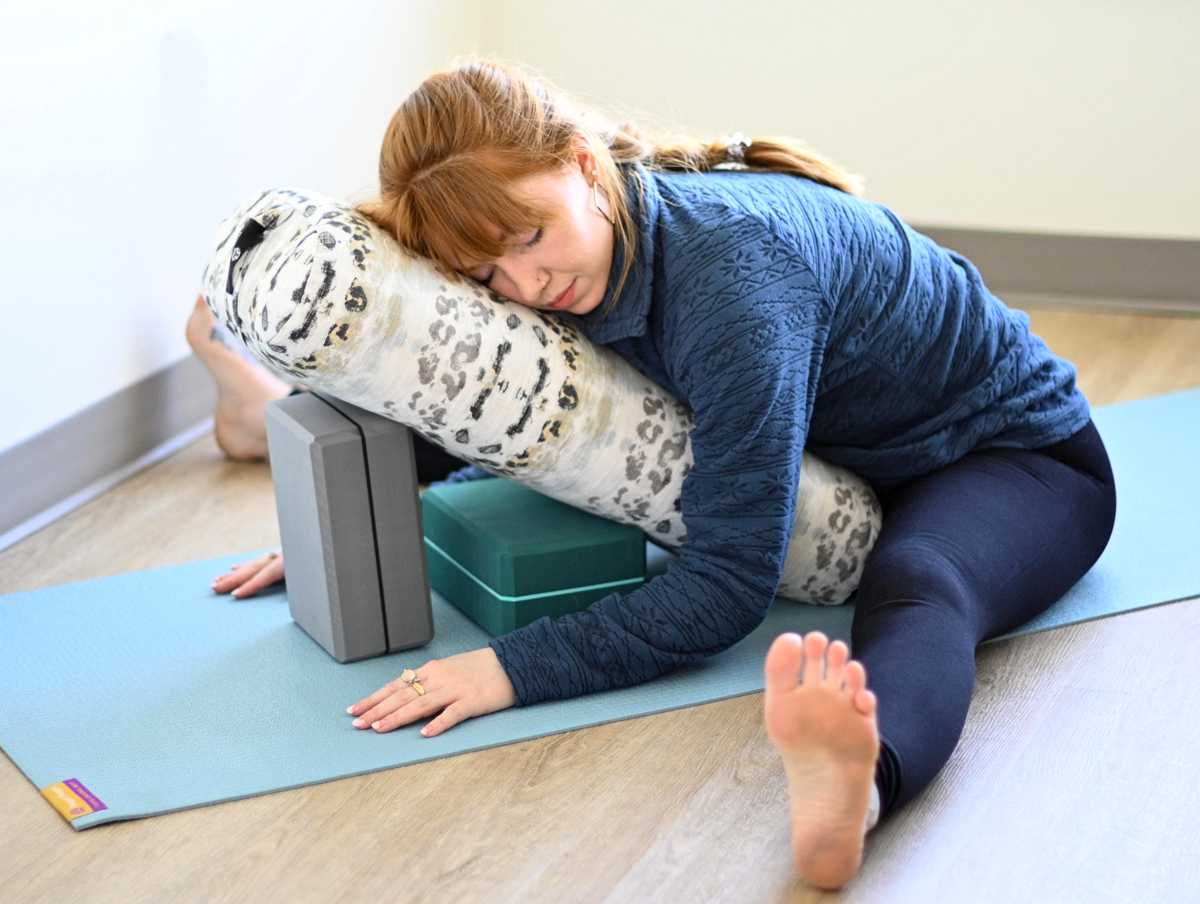This entry was posted on December 31, 2024 by Charlotte Bell.

Earlier this year, I wrote an article about how to simplify your yoga cues. If you’ve ever been to a yoga class where the cues came at you fast and furious, you may know how confusing it can be. I love hearing teachers explain the practice in ways I never imagined. But sometimes constant signals leave no room for our own exploration. Yoga cues are very important for the safety of students and for their development. But if I could only give one piece of yoga advice in my classes, it would be this: relax where you are.
A yoga index for mastering the practice of Asanas
This yoga signal aligns with the Yoga Sutras of Patanjali. Of the 196 yoga sutras, these three concern the practice of asanas (translated by Alistair Shearer):
- 2.46: Physical posture must be stable and comfortable.
- 2.47: It is mastered when all efforts are released and the mind is absorbed in the Infinite.
- 2:48 a.m.: We are then no longer upset by the play of opposites.
In Sutra 2.46 we learn that asana is a practice of balance: balance between stability and ease. The third niyama, tapas (inner fire) inspires us to be firm in our commitment, and strong and stable in our expression of poses. But we balance that with a sense of ease, never pushing ourselves to the point of pain or struggle.
Balancing these two qualities opens the door to mastery. What Sutra 2.47 tells us is that mastering asana has nothing to do with pushing our bodies to the limit or practicing “advanced” poses. Mastery comes when we are able to relax where we are. When we are able to relax into a pose as it is, no matter what it may look like from the outside, our mind and body become one. We are absorbed by the ever-changing sensations that arise in each moment of a pose.
Our ability to rest in each moment of each pose, regardless of the sensations that arise, produces the most transformative benefit of asana practice. Sutra 2.48 states that when we master asana in this way, we are able to move through the ups and downs of our lives with more grace.
Intentions for a new year
I have often said when we practice a seated forward bend in my classes, “Enlightenment does not come from touching your head with your knee. Relax where you are. Of course, this does not mean that instant enlightenment will occur when we relax into our poses as they are. But perhaps for a few moments we can touch our inner resource of calm and peace when we simply allow ourselves to be in our poses without judgment or ambition. We can leave the domain of TO DO in the kingdom of be.
Practicing asana in this way can help us get into the habit of relaxing where we are in other areas of our lives. We all have pleasant and unpleasant experiences in our lives. Peace does not come from avoiding unpleasant experiences; it comes from meeting them with both stability and clarity. When we practice this principle of yoga on the mat, it becomes an accessible skill off the mat.
As we enter a new year, may you relax where you are right now. May you cultivate stability and ease and enjoy the pleasures of simply being.
About Charlotte Bell
Charlotte Bell discovered yoga in 1982 and began teaching in 1986. Charlotte is the author of Mindful Yoga, Mindful Life: A Guide for Everyday Practice, and Yoga for Meditators, both published by Rodmell Press. Her third book is Hip-Healthy Asana: The Yoga Practitioner’s Guide to Protecting the Hips and Avoiding SI Joint Pain (Shambhala Publications). She writes a monthly column for CATALYST magazine and is the editor-in-chief of Yoga U Online. Charlotte is a founding board member of GreenTREE Yoga, a nonprofit organization that brings yoga to underserved populations. A lifelong musician, Charlotte plays oboe and English horn in the Salt Lake Symphony and the folk sextet Red Rock Rondo, whose DVD won two Emmy Awards.
